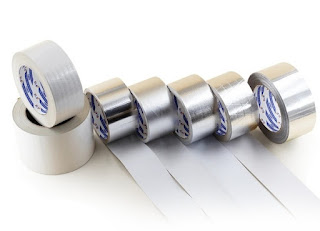Colored Gaffers Tape is a strange name to most people, though people have often heard of it. Sometimes it be named Gaffa tape or Gaff tape.
This specialty tape is made out of heavy cotton cloth, and has a similar look and feel to duct tape. Gaffers tape’s backing is PE laminated spun rayon cloth. The adhesive is natural rubber based PSA. It is primarily used by production crews on film, TV, and in live music to tape down cables, and is preferred in this industry for its matte finish that does not reflect light or interfere with visuals.
Due to its particular application, Colored gaffers tape has particularly rich colors to choose from.
Colored Gaffers tape is designed so that when removed it doe
s not damage the material or leave behind any residue. Another advantage of Gaffer’s tape is that unlike duct tape, it can withstand temperatures as high as 93 degrees Celsius without melting.
Backing carrier: 65% Polyester and 35% Cotton
Easy hand torn, Matte-finished, Diffuses light reflection
Adhesive: Natural rubber based adhesive
Low VOC, Odorless, Removable without adhesive residual.
Colored Gaffers tape common colors:
Black gaffers tape use on stage, provide black edges to tables, chairs, and other props. Use it to fix cables, carpets and other short-term set-ups.
White gaffers tape is a matte white tape, most of customers use it as floor marking tape. In Professional Photo Studio, Television studio, Stage Entertainment, Ground line markings divide into different areas.
Beige gaffers tape is a matte cloth tape near the color of cartons. For example, Hollywood expendables, Studio depot, Expendable Supplies for Film, Video and TV productions, Prop suppliers use Beige gaffers tape to fixing the cargos.
Red gaffers tape
Yellow gaffers tape is a Stage & Theatre Matt Gaffer Tape, use to stick Portable stages, Event furniture, Stage ramps.
Blue gaffers tape is a Stage Area Prep Masking tape, Floor Marking tape.
Green gaffers tape is a Stage drop Tape to decorate the stage with a background cloth.
Silver gaffers tape is a matte cloth tape near the color of Aluminum alloy doors and Windows.
Gaffers tape common type:
Chroma key tape is the same color as Chroma key screen background in video and photography. Use to repair and fix the Chroma key green screen backdrop. So Green screen tape to tape the edge of Green screen.
Fluorescent gaffers tapes include 4 colors common used as stage spike tape:
Fluorescent Green
Fluorescent Yellow
Fluorescent Pink
Fluorescent Orange
Stage set spike tape is a fluorescent matte cloth tape. It is a 1/2 inch narrow gaff tape for Stage marking on floor laid in an “X” shape. People in theatre, video and film know that spike tape is a valuable tool for making sure that performers, props and set pieces end up where they belong.
Spike tape as a Fluorescent cloth tape, use for a Labeling Tape on Light Control Board, DJ Mixing Board, Audio Mixer. It is also called DJ stage tape. It helps DJ mark where certain tracks, or certain parts of the track start.
Some sound crews use Fluorescent spike tape to fasten radio microphone belt packs to the actor’s back. other sound crews use Stage spike tape to secure the positions of microphone stands. The theatre stage spike tape use for marking the microphone. Different actors easily and quickly identify which microphone they should use in the dark light environment.





